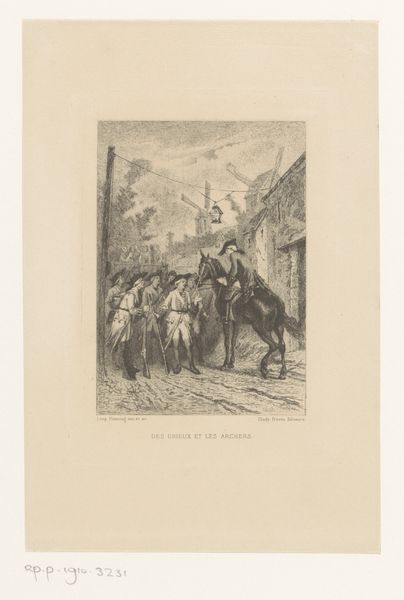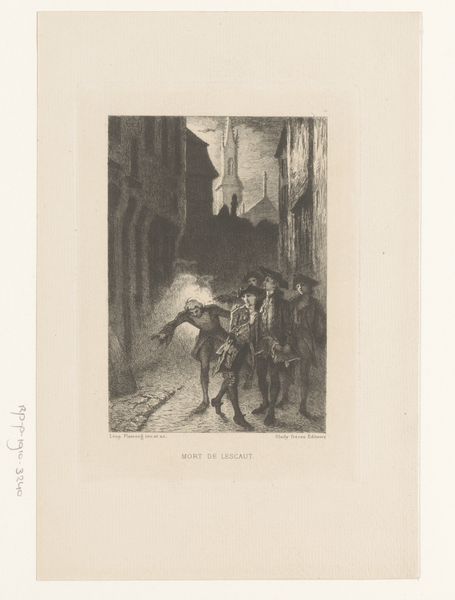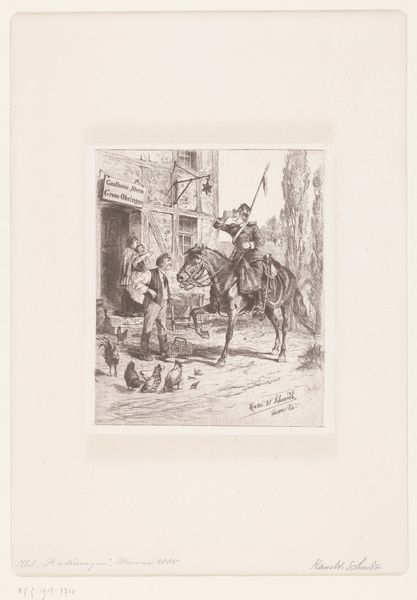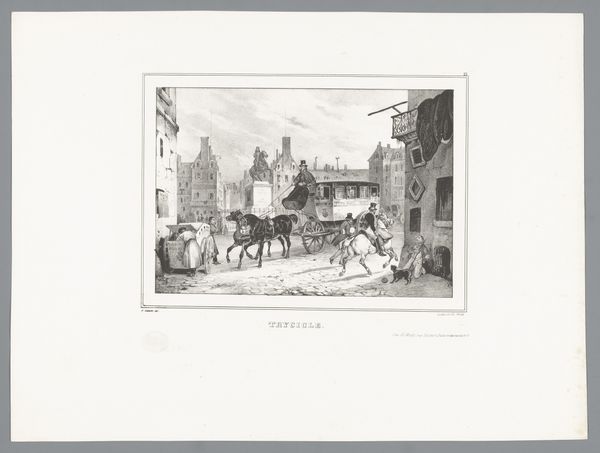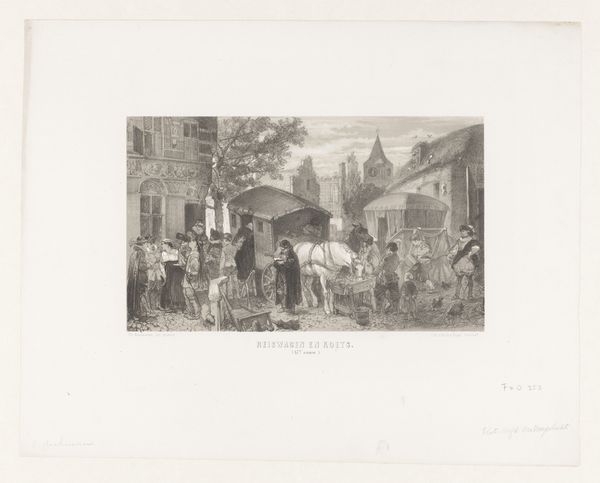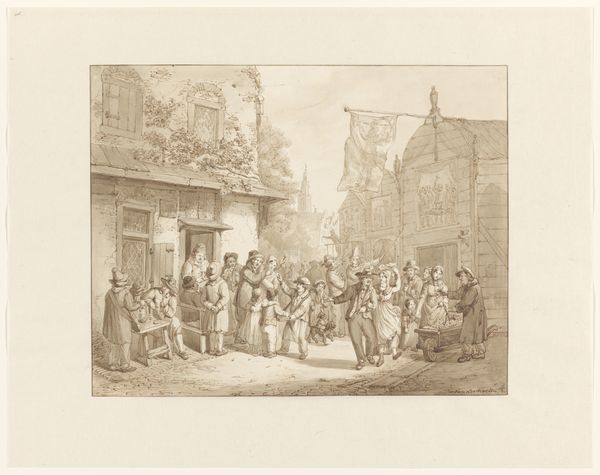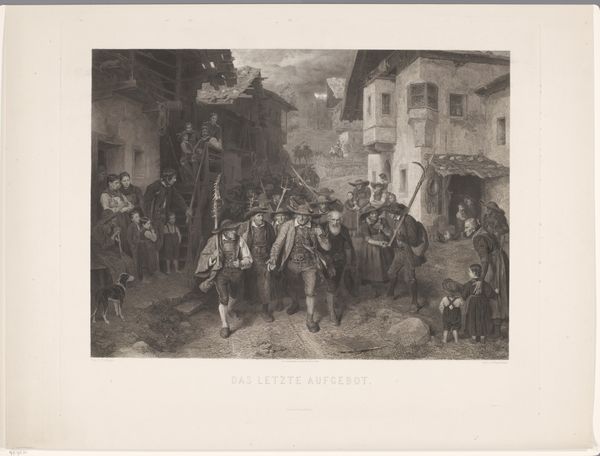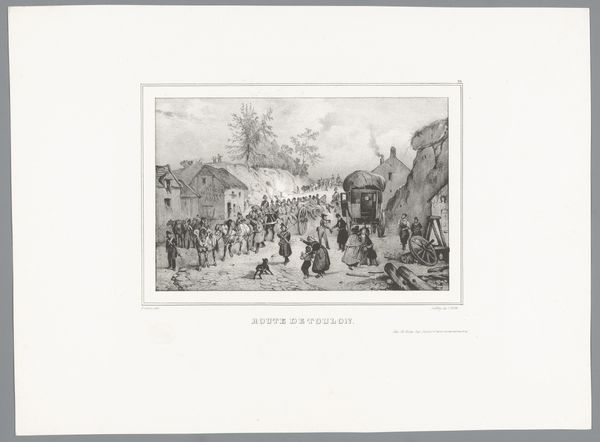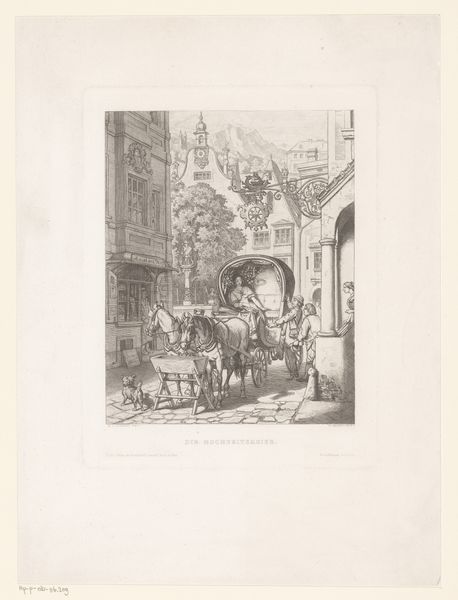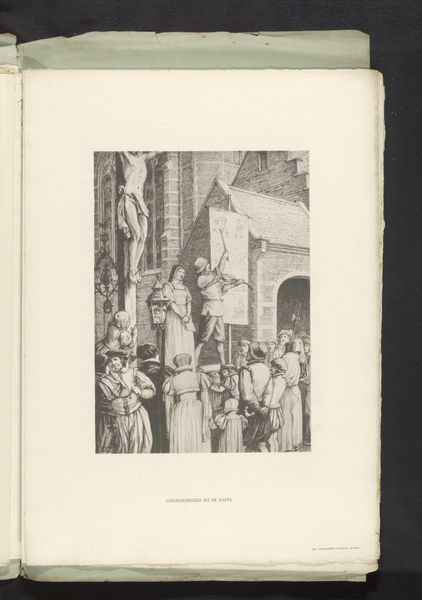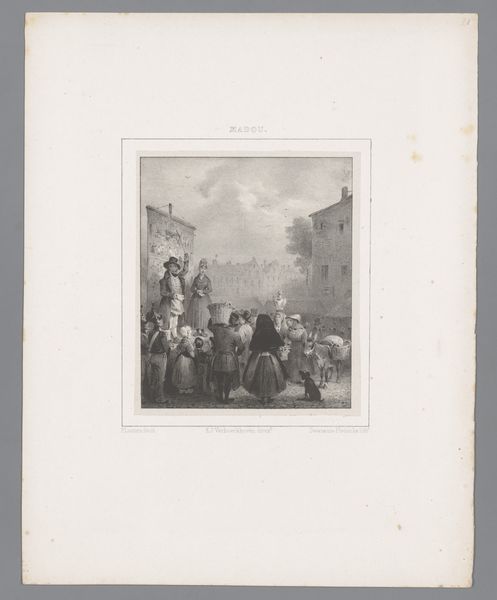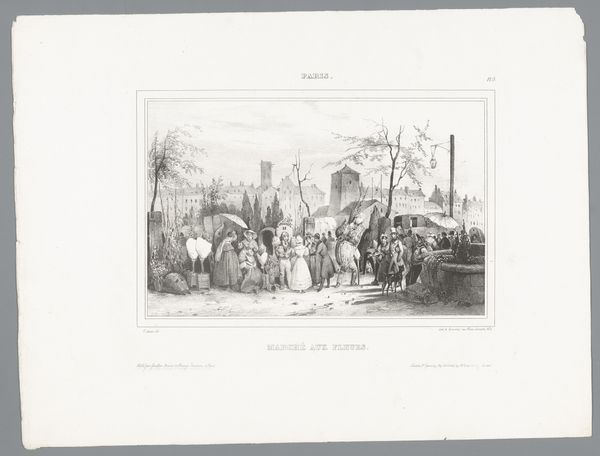
Dimensions: height 152 mm, width 109 mm
Copyright: Rijks Museum: Open Domain
Curator: This is "Abbé Prévost on Horseback at an Inn," an etching made around 1875 by Léopold Flameng. It beautifully captures a scene steeped in the style of Romanticism, evoking a strong sense of historical narrative through its medium and cityscape depiction. What springs to mind when you see this, Editor? Editor: The mood is instantly charming and almost… Dickensian? I imagine the air thick with the smell of hay and something roasting in the hearth of that inn. It feels like a frozen snippet of village life from a novel, observed at twilight, when shadows hold secrets. Curator: Indeed. That "frozen snippet," as you so aptly describe it, echoes the Romantic fascination with historical genre painting and portraits that allowed access to past times and stories. I find the inn’s sign, with its star motif, particularly fascinating; the star is a deep well of cultural symbolism pointing toward fate and destiny, key concepts during the period. Editor: And isn’t the scene almost staged? I love the little drama with the townspeople gossiping and pointing, seemingly aware of our ‘Abbè’ character riding in on horseback. Those chickens just roaming around adds a touch of beautifully chaotic realism, too! Curator: They're a delightful touch. Flameng was excellent at blending these observations to emphasize a complex tapestry of society life. Looking at it, I wonder about Abbé Prévost himself; a cleric, a novelist and adventurer; surely Flameng seeks to depict his layered, multifaceted personality using these townspeople to accentuate aspects of the abbé’s character. Editor: That's interesting – like everyone has a bit of insight, each acting like an extension to help build an overarching portrait! The whole village seems aware, making it impossible not to connect this character to storytelling. I guess with Flameng, it's never *just* seeing; it’s an opening line to start imagining all these tales. Curator: Precisely. The Romantic era prized emotional resonance and looked toward personal narratives embedded within visual experiences. These echoes resonate still within this beautifully etched snapshot, leaving one feeling both observant and actively engaged within its depicted space. Editor: Well said! Suddenly, the ‘snapshot’ of reality doesn't just hold its moment frozen in time—but opens to potential directions and echoes as we begin making these imaginative connections. It truly seems that, through shared tales, we create history even now, and our moment observing here.
Comments
No comments
Be the first to comment and join the conversation on the ultimate creative platform.
